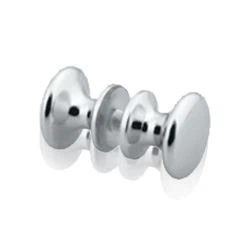Restoring a historic building is like taking a journey back in time. It's a labor of love that requires a delicate balance between preserving the past and ensuring the structure's functionality for the future. As a building parts supplier, I've had the privilege of being part of many such restoration projects. In this blog, I'll share some tips on how to select the right building parts for a historic building restoration.
Understanding the Building's History
Before you start shopping for building parts, it's crucial to understand the building's history. Every historic building has its own story, and the parts you choose should reflect that. Research the building's original construction date, architectural style, and any significant renovations or additions over the years. This information will help you identify the appropriate materials, designs, and finishes for the restoration.
For example, if you're restoring a Victorian-era building, you'll want to look for parts that are consistent with the ornate and detailed style of that period. This might include decorative moldings, stained glass windows, and intricate ironwork. On the other hand, if you're working on a mid-century modern building, you'll need parts that reflect the clean lines and minimalist aesthetic of that era, such as stainless steel fixtures and flat-panel doors.
Assessing the Existing Parts
Once you have a good understanding of the building's history, it's time to assess the existing parts. Take a close look at the building's structure, including the foundation, walls, roof, and floors. Look for signs of damage, wear, or deterioration, and determine whether the parts can be repaired or need to be replaced.
In some cases, it may be possible to salvage and restore existing parts, which can save you time and money. For example, if you have a set of original wooden doors that are in good condition but need a little TLC, you can have them refinished and repaired instead of replacing them. However, if the parts are severely damaged or beyond repair, you'll need to find suitable replacements.
Choosing the Right Materials
When selecting building parts for a historic building restoration, it's important to choose materials that are authentic and appropriate for the period. This means using materials that were commonly used during the building's original construction, such as wood, stone, brick, and metal.
However, it's also important to consider the practicality and durability of the materials. For example, while wood may be a traditional choice for doors and windows, it may not be the best option in a high-traffic area or in a climate with extreme weather conditions. In these cases, you may want to consider using a more durable material, such as aluminum or fiberglass, that can mimic the look of wood.
Another important factor to consider is the environmental impact of the materials. As more and more people become aware of the importance of sustainability, there is a growing demand for building materials that are eco-friendly and energy-efficient. When selecting building parts, look for materials that are made from recycled or renewable resources, and that have a low carbon footprint.
Finding Authentic Building Parts
One of the biggest challenges in a historic building restoration is finding authentic building parts that match the original design and style of the building. While some parts may be available from local salvage yards or antique stores, others may need to be custom-made.
When looking for authentic building parts, it's important to do your research and work with a reputable supplier. Look for suppliers who specialize in historic building restoration and who have a good reputation for quality and authenticity. You can also ask for recommendations from other restoration professionals or from local historical societies.
If you need to have parts custom-made, make sure you work with a manufacturer who has experience in historic building restoration. Provide them with detailed specifications and drawings of the original parts, and ask to see samples of their work before placing an order.


Considering Modern Upgrades
While it's important to preserve the historical integrity of a building, it's also important to consider modern upgrades that can improve the building's functionality and energy efficiency. For example, you may want to install new insulation, windows, and doors to reduce energy consumption and improve comfort. You may also want to upgrade the electrical and plumbing systems to meet current safety codes and standards.
When considering modern upgrades, it's important to balance the benefits of the upgrades with the impact on the building's historical character. Make sure the upgrades are compatible with the original design and style of the building, and that they do not detract from its historical significance.
Working with a Restoration Team
Restoring a historic building is a complex and challenging project that requires the expertise of a team of professionals. In addition to a building parts supplier, you'll need to work with an architect, a contractor, a preservationist, and other specialists who have experience in historic building restoration.
When selecting a restoration team, look for professionals who have a passion for historic preservation and who are committed to maintaining the integrity of the building. Make sure they have the necessary skills, experience, and credentials to handle the project, and ask to see examples of their previous work.
Conclusion
Selecting the right building parts for a historic building restoration is a critical step in the process. By understanding the building's history, assessing the existing parts, choosing the right materials, finding authentic building parts, considering modern upgrades, and working with a restoration team, you can ensure that your restoration project is a success.
If you're in the process of planning a historic building restoration project and need help selecting the right building parts, please don't hesitate to [contact me]. I'd be happy to discuss your project and help you find the perfect parts for your needs.
References
- National Park Service. (n.d.). Historic Preservation. Retrieved from https://www.nps.gov/subjects/historicpreservation/index.htm
- The American Institute of Architects. (n.d.). Historic Preservation. Retrieved from https://www.aia.org/topics/historic-preservation
- The National Trust for Historic Preservation. (n.d.). Historic Preservation. Retrieved from https://savingplaces.org/



